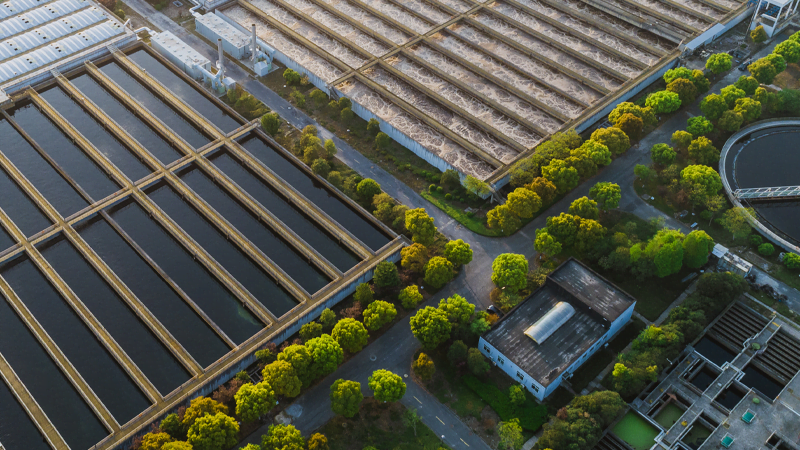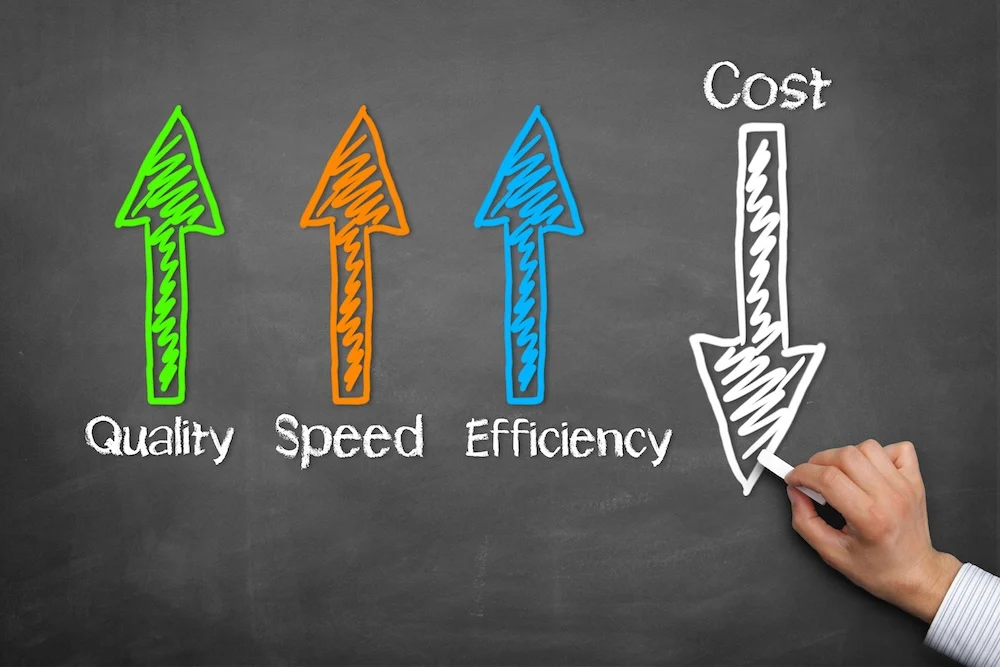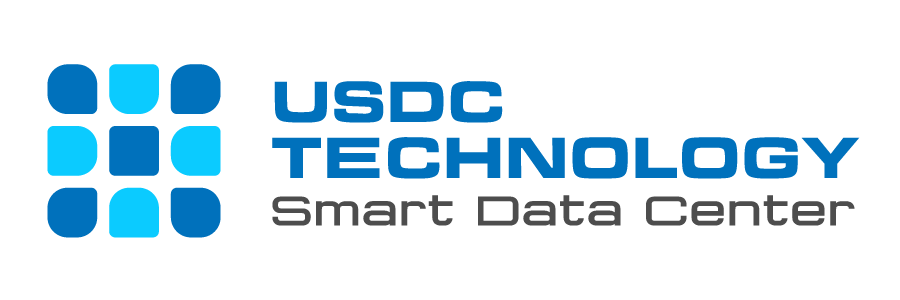Investing in ESG isn’t just a moral choice; it’s a SMART business move. Sustainable data centers, powered by eco-friendly practices, drive a remarkable ROI boost. According to Ponemon Institute, businesses adopting these practices saw a staggering 67% ROI increase over five years. Reduced energy costs and resource efficiency are the key drivers. Beyond profits, ESG sets you apart in a competitive market; 90% of executives believe it’s essential for success. Skepticism surrounds ESG, but real-world success stories prove otherwise. Implementing sustainability may seem costly, but the long-term financial and ethical gains are worth it.
But what’s the ROI on investing in ESG?
Specifically, can sustainable data centers truly boost your bottom line?

The answer is a resounding “yes.” In the series of Investing in ESG , this article aims to delve into undeniable benefits that sustainable data centers bring to your Return on Investment (ROI).
Table of Contents
I. ESG revolution
II. What is sustainable Data centers and why is it important?
III. Can sustainable data centers enhance ROI or just a myth? With real-world success cases
I. ESG revolution
In the context of data centers, enhancing ESG performance translates to enhancing data center performance. This encompasses factors such as increased uptime, reduced PUE (power usage effectiveness), improved WUE (water use efficiency), and more.
High energy costs, often exacerbated by the relentless demand for data processing and storage, are becoming an ever-increasing burden on businesses. Traditional data centers are notorious energy guzzlers, leading to skyrocketing operational expenses that can cripple profit margins.
The mounting environmental concerns cannot be ignored. Climate change is a stark reality, and businesses are under scrutiny like never before. The carbon footprint of data centers, with their massive power consumption and cooling needs, contributes significantly to these concerns.
In this era of heightened environmental awareness, customers actively seek partners and providers who share their values. The demand for eco-conscious partners is a pain point that businesses can’t afford to overlook.
This is precisely when ESG comes into play.
The ESG (Environmental, Social, and Governance) revolution is profoundly influencing industries like sustainable data centers within the B2B sector. Companies in data center, IoT, and cloud industries are embracing sustainability as a core value – According to numerous studies

Environmental, Social, and Governance (ESG) factors are no longer just buzzwords; they’re critical components of a company’s strategy. According to a recent report by Harvard Business Review, companies with strong ESG performance are more likely to attract and retain customers, resulting in up to a 20% higher customer satisfaction rate.
But how do sustainable data centers fit into this picture?
II. What is sustainable Data centers and why is it important?

What is sustainable data centers?
Sustainable data centers, often referred to as green data centers, represent a significant evolution in the data storage and processing industry. These data facilities are meticulously designed with a clear focus on reducing their environmental impact and promoting long-term sustainability.
What makes sustainable data centers important?
1. Renewable Energy Sources
Sustainable data centers prioritize the use of renewable energy sources. This means that a substantial portion, if not all, of the energy required to power these data centers comes from environmentally friendly sources like solar, wind, or hydropower. By relying on renewable energy, these centers significantly reduce their carbon footprint, contributing to a cleaner and more sustainable future
Why it matters
Mitigate environmental impact: Sustainable data centers represent an imperative in mitigating these environmental impacts and contributing to global climate change mitigation
Financial advantages: This translates directly into substantial cost savings on electricity bills by minimizing energy waste, optimizing resource utilization.
2. Enhanced reputation and Customer Loyalty
Environmental consciousness is on the rise. In fact, data from a Nielsen survey indicates that a significant portion (66%) of global consumers are willing to pay more for products and services from environmentally responsible companies. The rise of environmental consciousness among consumers is a multifaceted phenomenon influenced by greater awareness, concern for the future, scrutiny of corporate practices, desires for sustainable lifestyles, peer influence, regulatory changes, economic incentives, and ethical considerations
Why it matters
Attracts more customers: Sustainable data center providers offer transparency into their eco-friendly practices by providing data and reports showcasing their energy-efficient operations, renewable energy sources, and waste reduction initiatives. This transparency fosters trust among customers and stakeholders, as they can see firsthand the provider’s commitment to sustainability.
3. Regulatory compliance
As environmental regulations become more stringent, the importance of sustainable data centers for regulatory compliance cannot be overstated. These certifications validate such as LEED (Leadership in Energy and Environmental Design) or ISO 14001 (Environmental Management System) validate data center providers’ environmental responsibility and provide assurance to customers and regulators.
Sustainable data centers help businesses adhere to evolving environmental laws, reducing the risk of regulatory fines and legal complications. Compliance with environmental regulations is not just a legal requirement but also an ethical obligation in the eyes of the public and stakeholders.
Why it matters
Legal Adherence: Reduces the risk of costly fines and legal complications, safeguarding a company’s operations and finances.
Ethical Standing: Compliance with environmental regulations aligns with ethical considerations, reinforcing a company’s image as an ethically responsible organization. This resonates positively with customers and stakeholders who value ethical business practices.
4. Risk mitigation
Sustainable data centers contribute significantly to risk mitigation. By reducing energy dependence on volatile fossil fuels and optimizing resource utilization, these data centers help businesses weather fluctuations in energy prices and supply chain disruptions.
The Carbon Disclosure Project (CDP) highlights that companies actively managing and reducing their environmental impacts, including those associated with data centers, are better equipped to mitigate operational and financial risks related to climate change and resource scarcity.
Sustainable data centers act as a strategic risk management tool, ensuring business continuity and resilience.
Why it matters
Energy Price Stability: By reducing dependence on volatile fossil fuels and optimizing energy consumption, businesses can stabilize their energy costs. This predictability mitigates financial risks associated with energy price fluctuations.
Supply Chain Resilience: Sustainable data centers contribute to a resilient supply chain. By using energy-efficient technologies and reducing resource waste, these data centers minimize supply chain disruptions caused by resource scarcity or environmental disasters.
5. Competitive Advantage
Sustainable data centers provide a distinctive competitive advantage. In a corporate landscape increasingly influenced by ESG factors, Deloitte’s survey underscores that 90% of executives recognize the importance of ESG initiatives, including sustainable data centers, for a company’s success. This competitive edge extends beyond customer loyalty; it also appeals to investors, partners, and other stakeholders. Those businesses position themselves as leaders in responsible and forward-thinking business practices.
Why it matters
Market Differentiation: Sustainable data centers allow businesses to differentiate themselves in a crowded market. They stand out as leaders in responsible and forward-thinking business practices, setting them apart from competitors who may not prioritize sustainability.
Attracting Investors: The adoption of ESG initiatives, including sustainable data centers, appeals to investors who are increasingly considering environmental and social factors in their investment decisions. Businesses with robust ESG practices can attract a broader pool of investors, expanding their access to capital.
Strategic Partnerships: Companies that embrace sustainability, including sustainable data centers, are more attractive partners for other businesses and organizations. They can forge strategic partnerships with like-minded entities that share their commitment to responsible practices.
III. Can sustainable data centers enhance ROI or just a myth?

Misconception: Sustainable Data Centers Are Expensive to Build and Operate
In fact: Contrary to this belief, sustainable data centers may require a slightly higher upfront investment, but they consistently deliver significant savings over time. Energy-efficient technologies and renewable energy sources reduce operational costs, ultimately enhancing ROI.
Misconception: Traditional Data Centers Are More Reliable
In fact: While some may argue that traditional data centers are more reliable, sustainable data centers have proven to be equally dependable. Incorporating redundant power sources and innovative cooling systems, they offer high uptime and reliability, dispelling the notion that they compromise on performance.
Misconception: Sustainability Is Just a Green PR Stunt
In fact: Sustainable data centers go beyond environmental responsibility. They prioritize operational efficiency, reducing energy consumption and, consequently, costs. This isn’t just about perception but about concrete financial benefits.
Biggest concern
“Is Sustainability Only About Environmental Responsibility, or Does It Affect Bottom-Line ROI?”

In fact: The combination of energy efficiency, increased asset efficiency, improved net profit margin, reduced risks enhanced reputation, and long-term financial stability makes sustainable data center a SMART investment choice that can genuinely enhance ROI.
Here’s how
1. Energy Efficiency for Cost Savings:
Sustainable data centers are designed to be highly energy-efficient. Look at the essential metrics that play a key role in assessing and improving the efficiency of data centers, resulting in enhanced ROI
What drives Energy efficiency for cost saving
PUE (Power Usage Effectiveness):
- Definition: PUE is a metric used to measure the energy efficiency of a data center. It calculates the ratio of total energy consumption of the data center facility (including cooling, lighting, and other non-IT loads) to the energy consumed by IT equipment (servers, storage, networking).
- Importance: A lower PUE indicates better energy efficiency. Sustainable data centers aim to achieve a PUE as close to 1.0 as possible, meaning that nearly all energy is used by IT equipment, minimizing wasted energy on non-IT functions like cooling.
- Improvement Strategies: Sustainable data centers improve PUE by implementing advanced cooling techniques, optimizing airflow management, and using energy-efficient lighting and equipment. They also invest in renewable energy sources to reduce reliance on grid power.
- Success Case: An excellent example is Google’s data center in Hamina, Finland. By using seawater for cooling and renewable energy sources, Google achieved a PUE (Power Usage Effectiveness) rating of 1.12, significantly reducing their energy costs.
WUE (Water Usage Effectiveness):
- Definition: WUE measures the water efficiency of a data center, specifically, how much water is used for cooling in relation to IT equipment’s energy consumption. It’s calculated as the ratio of the total water consumed (for cooling) to the energy used by IT equipment.
- Importance: Sustainable data centers focus on reducing water consumption for cooling while maintaining effective temperature control. Lower WUE values indicate more water-efficient operations.
- Improvement Strategies: Strategies to improve WUE include using free cooling methods, like evaporative cooling, that minimize water usage, optimizing cooling system efficiency, and implementing water recycling and treatment systems.
SUE (Server Utilization Efficiency)
- Definition: SUE assesses the efficiency of server utilization within a data center. It measures the ratio of the computing capacity (workload) to the total server capacity.
- Importance: Sustainable data centers aim to maximize server utilization to reduce the number of servers required for a given workload. Higher SUE values indicate better server resource utilization and lower energy waste.
- Improvement Strategies: To improve SUE, sustainable data centers employ server virtualization, load balancing, and dynamic power management to ensure servers are operating efficiently and are not underutilized. This reduces both energy consumption and the need for additional hardware.
According to the “2021 Global Sustainability Data Center Report” by a reputable sustainability consulting firm, businesses implementing sustainable data center practices can save up to 30% on energy costs compared to traditional data centers.

By monitoring and optimizing these metrics, sustainable data centers can enhance their overall efficiency, reduce resource consumption, and align more closely with environmental and cost-saving goals. These metrics serve as valuable tools in measuring and improving data center sustainability and performance.
2. Increased Asset Efficiency (ROA)
Sustainable data centers provide higher asset efficiency by utilizing high-performance server hardware and efficient resource management. This means businesses can extract more value from each server, optimizing resource usage.
A. High-Performance Server Hardware: Sustainable data centers use state-of-the-art, high-performance server hardware. These servers are designed to deliver superior computing power, speed, and reliability. By using such hardware, businesses can achieve more tasks and processes with each server, effectively increasing the value they obtain from their IT infrastructure
So. What drives High-Performance Server Hardware
Solid-State Drives (SSDs) for storage resulting in faster data access and reduced latency, ensuring efficient and responsive data processing.
Redundant Components such as power supplies, cooling systems, and network interfaces. Redundancy ensures that in case of a hardware failure, the system can seamlessly switch to backup components, minimizing downtime.
Energy-Efficient Design: Including advanced cooling systems and power management. This duo ensures that operations remain environmentally responsible while delivering top-notch performance.
Multi-Core Processors: It can handle multiple tasks simultaneously, improving the overall server performance allowing faster data computations and smoother application performance.
B. Efficient Resource Management: Sustainable data centers implement advanced resource management techniques. These include server virtualization, load balancing, and dynamic resource allocation. These methods ensure that server resources, such as CPU, memory, and storage, are used optimally. As a result, businesses can make the most of their existing server assets, reducing the need for additional hardware investments.
A study by the Uptime Institute in 2021 indicated that data centers with higher energy efficiency, such as those with low PUE ratings, experience fewer unplanned power outages and minimize financial losses due to disruptions.
Success Case: Facebook’s data center in Luleå, Sweden, is known for its high stability and reliability due to its sustainable design, including cooling with seawater and renewable energy sources.
3. Improved Net Profit Margin (NPM):
Using sustainable data centers can enhance Net Profit Margin (NPM) by reducing operational and maintenance costs. This translates to higher profitability per unit of revenue.
2021 Global Sustainability Data Center Report notes that sustainable data centers can reduce operating and maintenance costs by up to 25% compared to traditional data centers.
Operational costs, including:
Energy Costs: This is one of the most significant operational expenses. It includes the cost of electricity to power servers, cooling systems, lighting, and other data center infrastructure.
Cooling Costs: Cooling is essential to maintaining the optimal temperature within the data center. It includes the energy costs associated with air conditioning, cooling systems, and fans.
Hardware Costs: This includes the initial purchase cost of servers, storage devices, networking equipment, and other hardware components.
Personnel Costs: Operational expenses also cover the salaries and benefits of data center staff responsible for monitoring, maintenance, and management.
Monitoring and Management Tools: Costs related to the deployment and maintenance of monitoring and management software and tools used to optimize data center operations.
Security Costs: Expenses for implementing and maintaining security measures, including physical security, fire suppression systems, and cybersecurity solutions.
Maintenance costs:
Equipment Maintenance: This category includes the expenses associated with the regular maintenance and servicing of hardware components like servers, storage devices, and networking equipment. It covers both preventive maintenance and addressing hardware failures.
Repairs: Costs related to repairing or replacing faulty or damaged hardware components, including server parts and cooling systems.
Upgrades: Expenses incurred when upgrading hardware or software to ensure the data center’s efficiency and compliance with the latest technology standards.
Environmental Maintenance: Costs associated with environmental control and maintenance, such as HVAC system maintenance, air quality testing, and addressing any environmental issues within the data center.
Energy Efficiency Projects: Investment in energy-efficient technologies and projects aimed at reducing energy consumption and operational costs over time.
Personnel Training: Training costs for data center staff to keep them updated on the latest technologies and best practices for maintaining and operating the data center efficiently.
Success Case: Microsoft’s data center in Cheyenne, Wyoming, adheres to stringent environmental standards, ensuring compliance with local and federal regulations.
By adopting sustainable practices, sustainable data centers aim to reduce these operational and maintenance costs through energy-efficient technologies, predictive maintenance, improved hardware longevity, and efficient resource allocation. These cost savings contribute to higher Net Profit Margin (NPM) and increased profitability per unit of revenue.
4. Reduced risks
Sustainable data centers also play a vital role in risk reduction for businesses. These data centers are designed with resilience in mind, minimizing the chances of disruptions due to power outages or resource shortages. By using renewable energy sources, efficient cooling methods, and disaster recovery protocols, they enhance the overall reliability of critical IT infrastructure. This reduced risk translates into fewer unexpected disruptions, safeguarding business operations and protecting the bottom line. In this way, sustainable data centers contribute not only to financial stability but also to a more secure and profitable business landscape.
Success case: Take USDC Technology – Data Center Provider as an example for Long-Term Savings and Predictability. The company has successfully adopted ESG in order to become a SMART data center Provider worldwide. They have saved significant costs by implementing cutting-edge monitoring and predictive analytics tools to detect potential risks before they materialized. These tools allowed them to identify and address issues such as overheating, power fluctuations, and security threats in real-time, minimizing the risk of data center outages and costly downtime, setting USDC Tech as a top prestigious data center construction and services provider, it excels in providing SMART solutions for customers
Reports from the U.S. Department of Energy and organizations like the Uptime Institute consistently highlight the financial advantages of sustainable data centers. They emphasize the potential for 30% or more energy cost reductions, improved brand reputation, and long-term operational stability, all of which contribute to a significant enhancement of ROI.
In conclusion:
In the pursuit of enhanced ROI and responsible business practices, the adoption of sustainable data centers emerges as a clear imperative, not a myth. These centers epitomize fiscal prudence by reducing energy costs and optimizing resource consumption. Beyond tangible financial gains, they bolster brand reputation and customer loyalty in an increasingly eco-conscious marketplace. Sustainable data centers play a pivotal role in mitigating environmental impacts, embracing energy efficiency, and ensuring regulatory compliance. As a strategic investment, they illuminate a path where profitability aligns seamlessly with ethical commitment. Embracing sustainable data centers is not a choice; it’s a transformative step towards a more sustainable and responsible business future.
If your business is struggling to pinpoint its own business needs, why not let market-savvy experts do it for you? USDC Tech, with its consulting expertise, is always confident in delivering the most suitable data center and cloud solutions for each business.


